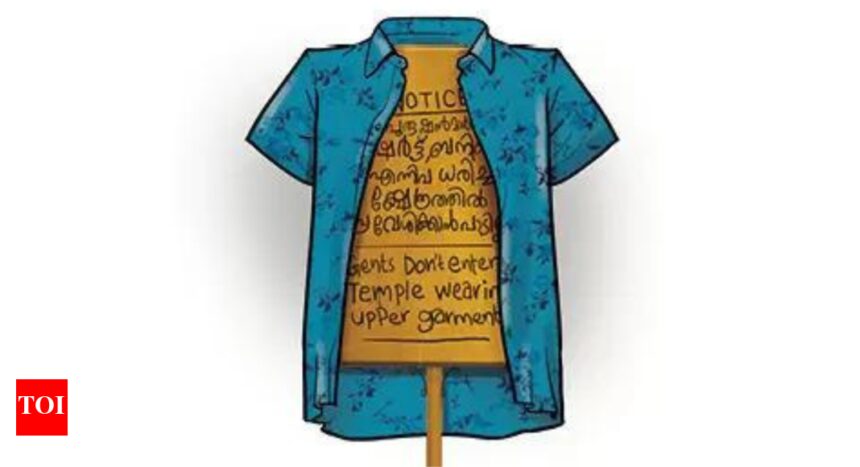In 1982, an incident occurred in the dining hall of the Guruvayur temple complex that highlighted ongoing caste discrimination in Kerala. A clash erupted when staff serving a special free meal confronted a man who refused to remove his upper garment, demanding to know if he was a Brahmin. This meal, known as ‘Brahmin Oottu,’ was traditionally reserved for Brahmins, excluding members of lower castes. The man at the center of the controversy was Swami Ananda Theerthan, a devoted disciple of the influential social reformer and spiritual leader Sree Narayana Guru, who campaigned against caste discrimination.
The situation escalated and garnered significant media attention, leading to considerable backlash against temple authorities and the government. In response, then-Chief Minister K. Karunakaran acted swiftly to abolish the ‘Brahmana Oottu’ custom, organizing a mass feast in the same dining area. He participated alongside community members, including Dalit activist and writer Kallara Sukumaran.
However, certain traditions, such as requiring male devotees to enter temples without upper garments, persist to this day. Recently, Satchidananda Swamy, the head of the Sivagiri Mutt founded by Sree Narayana Guru, reignited this debate by calling for an end to such traditions. Speaking before Kerala Chief Minister Pinarayi Vijayan at the opening of the annual Sivagiri pilgrimage, he argued that the current dress code was a remnant of casteism and irrelevant to true spirituality. He emphasized that a devotee’s inner thoughts and intentions while worshipping should be the focus, rather than mere outward appearances.
Satchidananda Swamy criticized some clergymen for enforcing outdated Brahmanical customs, including some non-Brahmin priests associated with his own institution. Chief Minister Vijayan acknowledged Swamy’s suggestion positively but cautioned that any changes should come after reaching a consensus among all relevant temple stakeholders, likely due to the government’s troublesome experience with the Supreme Court’s ruling that allowed women of all ages to enter the Sabarimala temple.
The president of the Travancore Devaswom Board, P.S. Prasanth, echoed this need for consensus, making it clear that significant decisions about temple customs cannot be made unilaterally. Historian M.G. Sasibhooshan mentioned that dress codes in temples may have originated from a desire to prevent casual visitors from treating sacred places as tourist attractions. He observed that such restrictions are primarily found in Kerala or a few specific Karnataka temples linked to local Brahmin traditions, unlike most other Indian temples where devotees face no strict dress code.
The issue has sparked contentious debates, especially after the Nair Service Society’s general secretary, G. Sukumaran Nair, criticized Vijayan for supporting Swamy’s stance, arguing that temple traditions should remain intact and questioning Swamy’s authority to challenge them. In contrast, Vellappally Natesan, the general secretary of the Sree Narayana Dharma Paripalana (SNDP) Yogam, contended that such discussions should unite rather than divide the Hindu community.
On a more conciliatory note, Akkeeraman Kaladasan Bhattathirippad, president of the Yogakshema Sabha, acknowledged that while certain outdated practices should be discarded, change must be approached through broader consultations, examining each case individually. He pointed out the variability of customs among different temples, noting that for instance, while Sabarimala has no dress restrictions, it enforces other controversial limitations regarding the entry of women within specific age groups. He emphasized the need for careful consideration when attributing every traditional custom to Brahminical dominance.
This ongoing debate continues to reflect the complexities and tensions surrounding tradition, caste, and modern reforms in Kerala’s religious practices.










